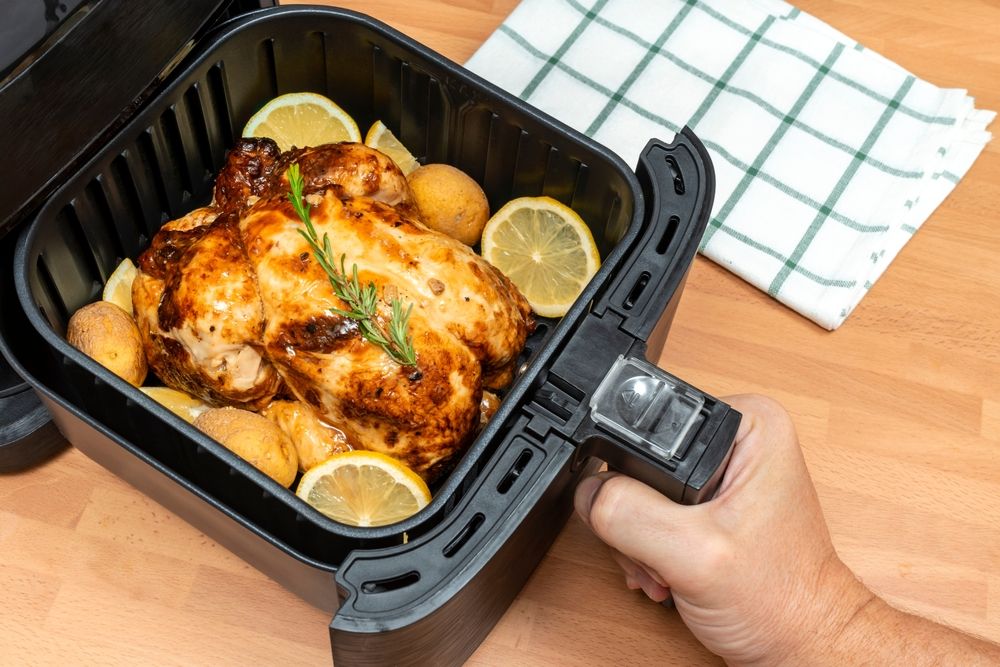Crispy fries without the guilt, juicy chicken wings in a snap, and a range of quick, oil-free meals—these are some of the promises that make air fryers one of the hottest kitchen appliances today. But not all air fryers are created equal. With differences in size, design, features, and price, picking the right one for your needs can be overwhelming. Whether you’re health-conscious, short on counter space, or cooking for a big family, there’s an air fryer suited for you. This guide will walk you through the key factors to consider so you can purchase an air fryer that seamlessly slots into your kitchen routine and delivers the crispy, delicious results you crave.
1. Understand How Air Fryers Work
Why It Matters
An air fryer essentially works like a small, powerful convection oven. High-speed fans rapidly circulate hot air around your food, creating a crispy exterior while using little to no oil. Knowing the basic mechanism helps you assess how its features—such as temperature controls, timers, or special cooking presets—will affect the final result.
Key Points
- Convection Heating: Ensures even browning and faster cooking times compared to traditional ovens.
- Minimal Oil Use: Typically requires just a tablespoon or spray of oil, making it a more healthful alternative to deep-frying.
- Versatile Cooking: Beyond fries and wings, many models let you bake, roast, grill, dehydrate, or even reheat leftovers.
Takeaway: Air fryers are essentially compact, high-powered ovens designed to produce crisp textures with less fat. Look for a design that circulates heat thoroughly and consistently for best results.
2. Choose the Right Capacity for Your Household
Why It Matters
One of the first decisions you’ll face is determining the appropriate size or capacity. Air fryers range from smaller, 2- to 3-quart units to 6-quart (and larger) models that can feed bigger families.
Capacity Guidelines
- 2 to 3 Quarts: Suitable for individuals, couples, or those with minimal counter space. You can cook about 1–2 servings at a time.
- 4 to 5 Quarts: A popular middle ground for small families of three to four. It offers enough space for a variety of meals without taking up too much room.
- 6+ Quarts: Ideal for larger families (five or more), frequent entertainers, or those who want to cook full meals (like a whole chicken) in one go.
Takeaway: Match capacity to how many people you cook for and how often you’re willing to cook multiple batches. A slightly larger air fryer can be more versatile but check if you have enough storage or counter space.
3. Consider the Shape and Design
Why It Matters
The air fryer’s shape can influence how it fits in your kitchen and how you load food. Some designs have a basket that pulls out (often cylindrical or pod-shaped), while others look more like a mini oven with racks and glass doors.
Basket (Pod) Style
- Pros: Usually compact, easy to shake or rotate food mid-cooking, user-friendly.
- Cons: Might have limited capacity if you want to spread food in a single layer. Larger foods like a small chicken or pizza can be harder to cook without cutting or repositioning.
Oven-Style (Toaster-Oven Hybrid)
- Pros: Typically larger, with multiple racks for cooking different foods simultaneously. The front door and trays can be easier to access and clean for some.
- Cons: Bigger footprint, might take longer to preheat, and can be pricier.
Takeaway: If you primarily cook for a small household and love quick, crispy foods, a basket style might suffice. For larger families or those wanting a versatile multi-rack setup, consider an oven-style air fryer.
4. Temperature Range and Cooking Functions
Why It Matters
Not all air fryers offer the same temperature range or extra functions like roasting, dehydrating, reheating, or baking. Having more options can expand your cooking repertoire but also might raise the price.
What to Look For
- Temperature Range: Commonly spans around 180–400°F (82–204°C). Higher maximum temperatures (like 450°F) can help you achieve crispier textures or faster browning.
- Pre-Programmed Settings: Many air fryers come with presets (e.g., fries, chicken, fish) that auto-adjust time and temperature. Handy if you’re a novice or want convenience.
- Additional Functions: Some models double as dehydrators or convection ovens, letting you handle tasks like drying fruits or baking small batches of cookies.
Takeaway: Prioritize an air fryer with enough temperature flexibility for your cooking style—most people benefit from a wide range and at least a few presets. If you see yourself dehydrating or baking often, consider advanced multi-function units.

5. Ease of Use and Cleaning
Why It Matters
An appliance that’s a nightmare to clean quickly ends up gathering dust. Air fryers that have dishwasher-safe baskets or removable non-stick trays can significantly simplify post-meal cleanup.
Features to Check
- Non-Stick Basket: Minimizes stuck-on grease. Ensure it’s PFOA-free and scratch-resistant for durability.
- Dishwasher-Safe Parts: Look for baskets, trays, or racks labeled as dishwasher-safe to save time and elbow grease.
- Control Panel: Digital touchscreens can offer precise settings, while dials might be simpler to use but less exact.
- Interior Space: If it’s an oven-style model, confirm that interior walls or racks aren’t too difficult to access for wiping down.
Takeaway: A user-friendly design that’s easy to clean and operate can make the difference between loving your air fryer and dreading it.
6. Build Quality, Brand, and Warranty
Why It Matters
A well-constructed air fryer should last several years. Cheaper, poorly built models can experience issues like peeling non-stick coatings or inconsistent heating elements.
Factors to Evaluate
- Brand Reputation: Companies like Philips, Ninja, Cosori, Instant, Cuisinart, and Breville have established track records. Check user reviews for reliability and performance.
- Warranty Length: Many mid-range air fryers come with one-year limited warranties. Some premium brands offer longer coverage.
- Material Sturdiness: Inspect the handle, control panel, and basket for durability. A wobbly handle can be risky when pulling out hot food.
Takeaway: Spending a bit more on a well-reviewed brand with decent warranty coverage can yield consistent results and fewer headaches.
7. Price Range and Value
Why It Matters
Air fryers vary from around $50 to $300 (or more). More expensive doesn’t always mean better for your needs, especially if you won’t use all the bells and whistles.
Price Tiers
- Budget ($50–$80): Typically smaller capacity (2–3 quarts), basic functionality, manual dials. Decent for single users or couples.
- Mid-Range ($80–$150): Larger capacity, digital controls, possibly multiple presets. A sweet spot for families wanting reliable performance without going high-end.
- High-End ($150–$300+): Oven-style or multi-function designs, higher build quality, potential bonus features like rotisserie attachments or advanced air circulation technology.
Takeaway: Define a realistic budget and weigh the features you truly need. A reliable mid-range model often hits the mark for most households.
8. Additional Tips for Maximum Benefit
- Avoid Overcrowding
- Air fryers rely on hot air circulation. Overstuffing the basket can lead to uneven cooking. Cook in batches if needed.
- Experiment with Cooking Times
- Presets are handy, but actual cook times vary by air fryer model and food thickness. Start with recommended times, then adjust as you learn your unit’s quirks.
- Preheat if Needed
- Some recipes call for preheating the air fryer, enhancing crispiness. Check your manual—some modern models automatically account for preheating in their presets.
- Use Minimal Oil
- A quick spray or brush of oil on foods can help achieve that signature golden-brown finish without over-saturating.
Buying an air fryer can transform how you cook, delivering crispy textures and healthier meals in less time than a conventional oven. The key is to think carefully about your household size, favorite foods, and kitchen space so you pick a model with the right capacity, design, and features. Whether you opt for a smaller basket-style unit or a more versatile oven-style model, aim for one with a broad temperature range, solid construction, and easy-to-clean parts.
Take advantage of user reviews to gauge reliability and performance; often, well-known brands bring peace of mind in terms of consistent results and warranty support. But even the best appliance will underperform if you overload the basket or fail to experiment with times and temperatures. Spend a little time getting to know your air fryer’s sweet spots—enjoying crunchy fries, roasted vegetables, and succulent chicken with fewer calories and minimal fuss. With the right air fryer, you can indulge in fried-like textures while taking a step toward healthier cooking for you and your family. Bon appétit!





